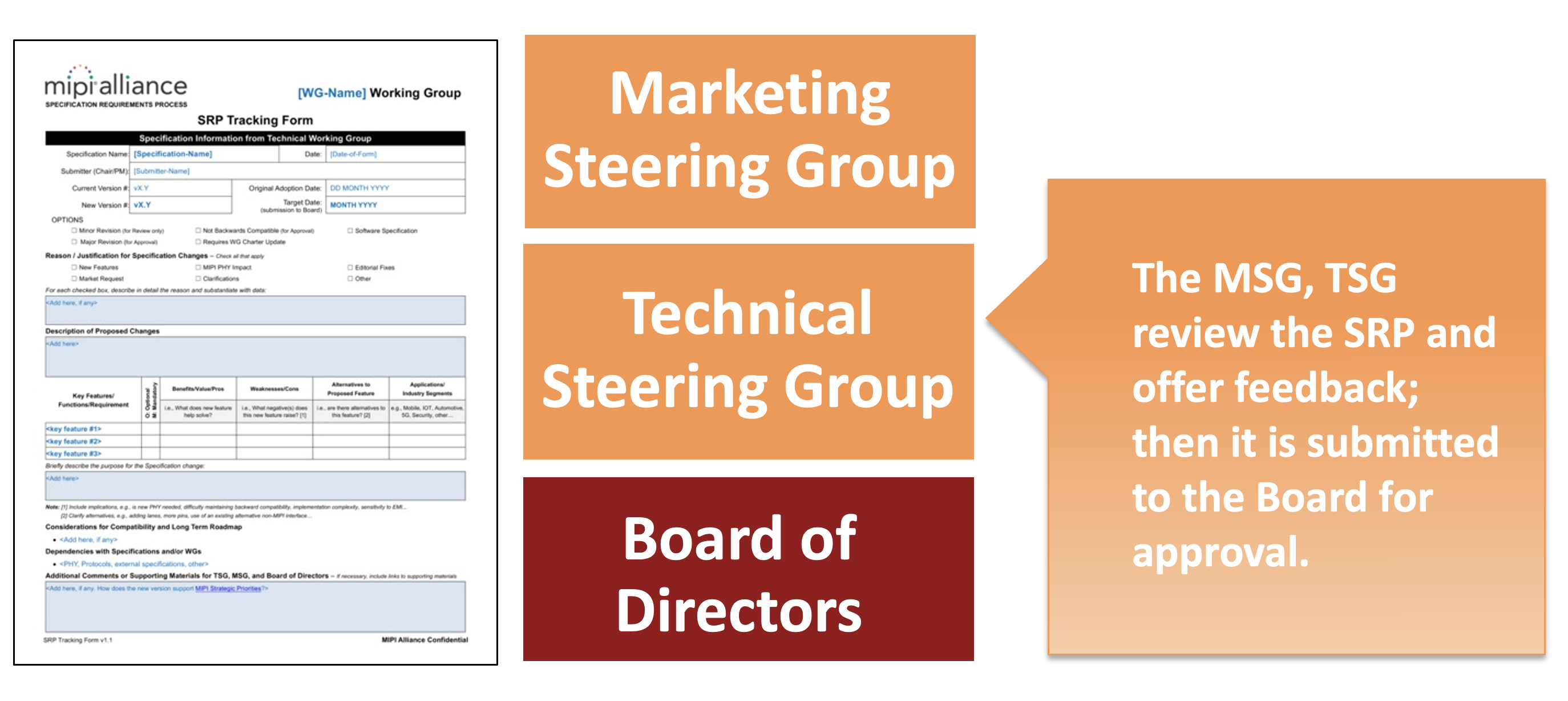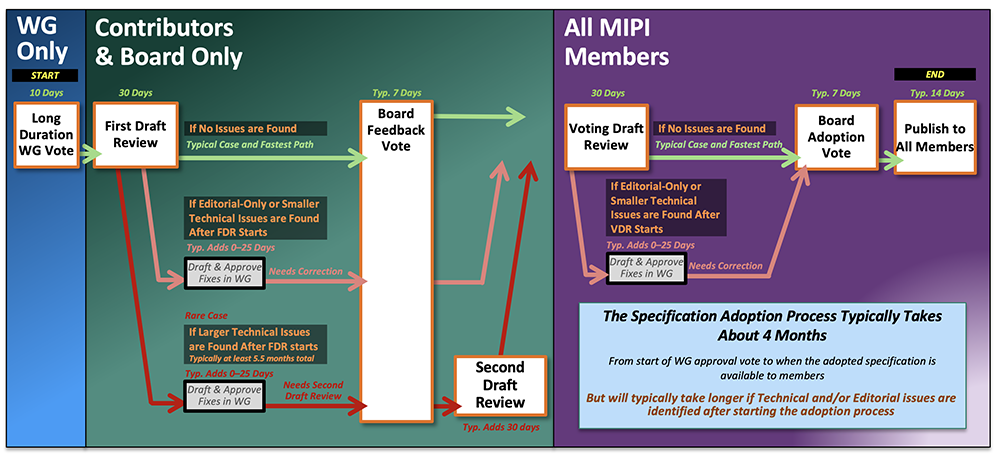Specification Development & Adoption
MIPI has delivered more than 50 specifications in mobile and mobile-influenced markets. Widespread adoption places MIPI specifications in every smartphone on the market, as well as in new systems across the span of mobile-influenced markets, including AR/VR, automotive, IoT, industrial, AI, medical and aerospace.
Working Groups
The organization currently has more than a dozen working group that discuss and propose technical solutions, and develop draft specifications and supporting documents. New working groups are created, and older working groups may be terminated, as market requirements for interface standards evolve over time. Participation is open to Founders, Promoters and Contributor member companies. While Adopter members do not participate in working groups, they do have access to the resulting specifications and may participate in certain interest groups and Birds of a Feather (BoF) groups.
Roadmap
Based on input from MIPI working groups, the Technical Steering Group (TSG) updates the MIPI Specification Roadmap following each member meeting to provide a high-level view of all specifications in the development and adoption process. The updated Specification Roadmap is shared with all members following each member meeting, along with working group highlights and development timelines from working groups' face-to-face sessions.
Development & Adoption

It starts with an SRP
When a working group identifies a need for a new specification or a revision to an existing specification, it scopes the details in a Specification Requirements Proposal (SRP) form and agrees by consensus or vote.
The SRP provides the Marketing Steering Group (MSG), TSG and board a mechanism for feedback on technical and marketing requirements, market analysis, applications/industry segments, strategy, roadmap schedules, specification dependencies, justification for the release or revision, and key features and functions of the specification proposed.
Following review and feedback from the TSG and MSG, the SRP is submitted to the board for approval. Once approved, the specification is added to the roadmap, and the working group begins technical development.

Adoption Process
Once a working group has completed development, the specification enters the adoption process, which may follow one of three paths, depending on any issues found during First Draft Review.
The typical adoption follows Path A (as outlined in the diagram) in which no issues are found during the First Draft Review. Only Contributor, Board and Promoter members have access to MIPI specifications in First Draft Review.
If no comments or changes are received during the First Draft Review, the specification proceeds to Voting Draft Review. At this stage, all members have access to the draft specification document.
If no comments or changes are received during Voting Draft Review, the specification proceeds to the adoption vote in the MIPI Board of Directors. If the adoption vote passes, then the specification is prepared for publication and released to all MIPI members. If requested by the working group and approved by the Board, a specification can also be released to the public.







